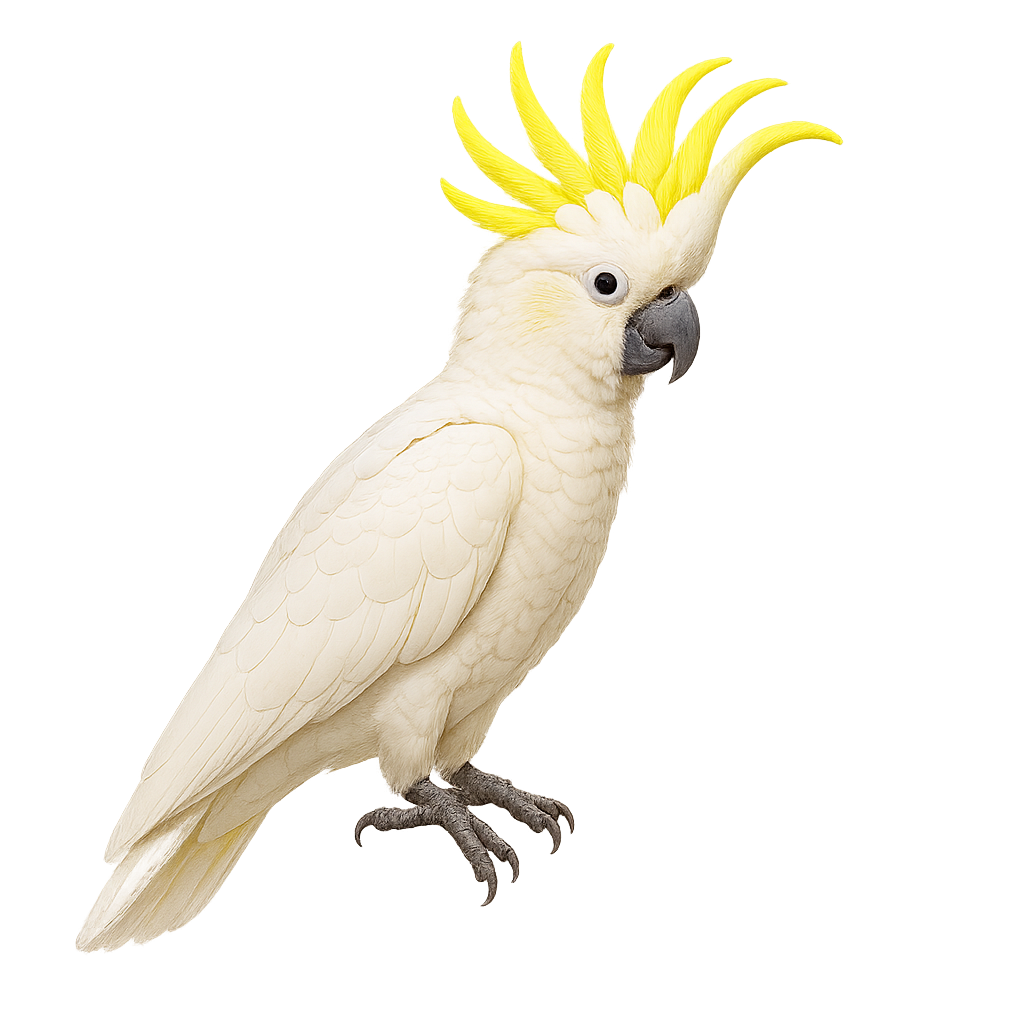Your wildlife photography guide.
Explore the sulphur-crested cockatoo in detail, study its behavior, prepare your shots.
Where to observe and photograph the sulphur-crested cockatoo in the wild
Learn where and when to spot the sulphur-crested cockatoo in the wild, how to identify the species based on distinctive features, and what natural environments it inhabits. The WildlifePhotographer app offers tailored photography tips that reflect the sulphur-crested cockatoo’s behavior, helping you capture better wildlife images. Explore the full species profile for key information including description, habitat, active periods, and approach techniques.
Sulphur-crested Cockatoo
Scientific name: Cacatua galerita

IUCN Status: Least Concern
Family: CACATUIDAE
Group: Birds
Sensitivity to human approach: Tolerant
Minimum approach distance: 10 m
Courtship display: August to January
Incubation: 26-30 jours
Hatchings: August to March
Habitat:
Forests, savannas, urban areas
Activity period :
Primarily active during the day, with peak activity in the morning and late afternoon.
Identification and description:
The Sulphur-crested Cockatoo, or Cacatua galerita, is a striking bird native to Australia and New Guinea. Easily identified by its vibrant yellow crest, it sports a pure white plumage. Measuring about 45 to 50 cm in length, it has a strong beak and piercing black eyes. Social and intelligent, it lives in flocks that can number in the hundreds. Its loud, harsh call is often heard in forests, savannas, and even urban areas. Opportunistic in nature, it feeds on seeds, fruits, and occasionally insects. While admired for its beauty and intelligence, it can be a pest in agricultural areas.
Recommended lens:
400 mm – adjust based on distance, desired framing (portrait or habitat), and approach conditions.
Photography tips:
To photograph the Sulphur-crested Cockatoo, it's advisable to use a telephoto lens of at least 400mm to capture detailed images without disturbing the bird. Look for areas where they gather, such as fruit trees or water points. Be patient and discreet, as although they are tolerant, sudden movements can scare them away. Take advantage of morning or afternoon light to get shots with beautiful natural lighting.
The WildlifePhotographer App is coming soon!
Be the first to explore the best nature spots, track rutting seasons, log your observations, and observe more wildlife.
Already 1 430 wildlife lovers subscribed worldwide

